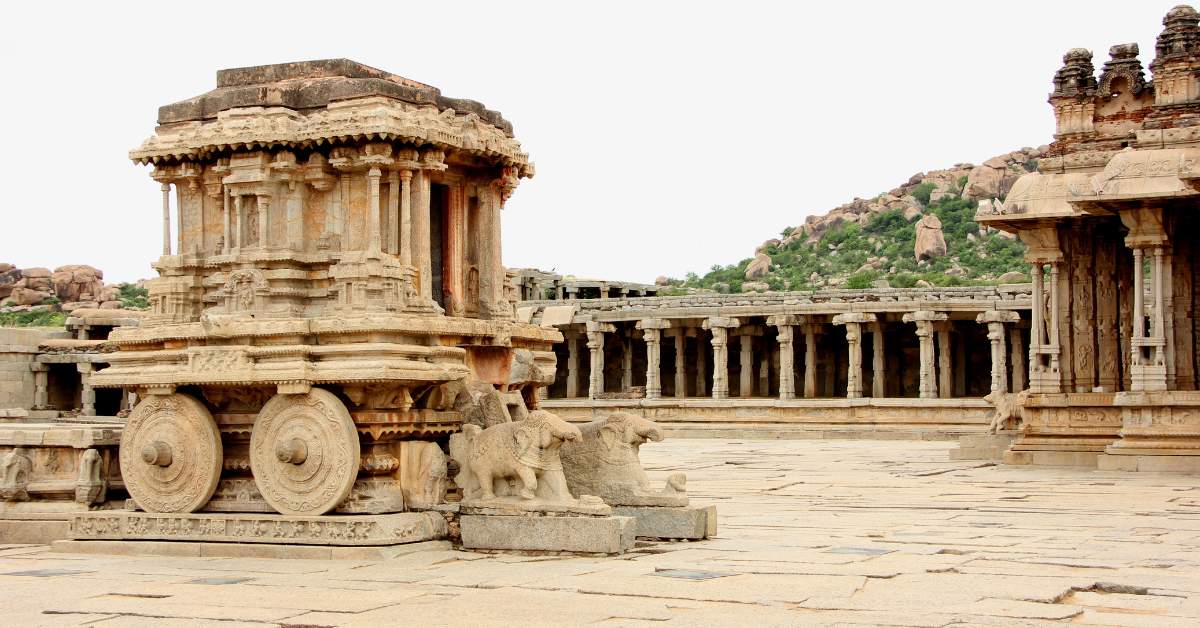Welcome to Trip Trek Tales, your travel guide. Hampi, a tiny town situated in Karnataka, is a place that has an echo of the past. The capital of the Vijayanagara Empire once upon a time boasts to be the second largest city globally during the 14th century. In our current era, it is listed as one of UNESCO’s World Heritage sites and has a rich history, architecture and stunning natural beauty. Spread over 26 square kilometres, the ruins of Hampi are evidence of the splendour that was seen in the remains of the Vijaynagar Empire. There are stories told by every part of Hampi: grand temples and palaces, intricate sculptures and busy bazaars.
In this blog, we will take you to amazing places to visit in Hampi so that you can discover all the cultural and historical treasures that make this place a must-see for anybody who loves history, architecture or travelling at large.
14 Best Places To Visit In Hampi To Make The Most Out Of Your Trip
These are the places you should visit while travelling to Hampi.
1. Virupaksha Temple: The Heart of Hampi
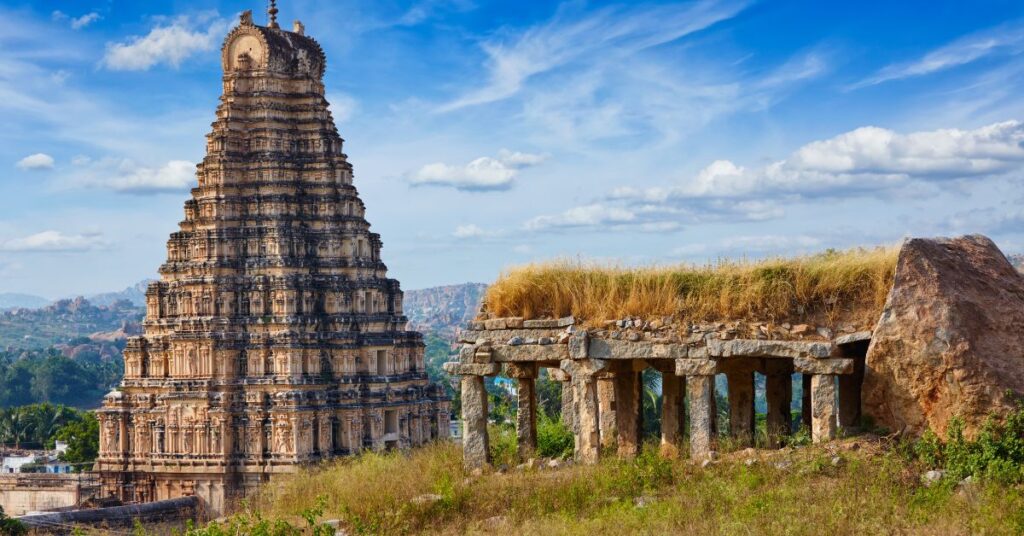
Virupaksha Temple which is located on one corner side is highly acclaimed as among the famous landmarks in Hampi being an epitome example of the richness that characterized the Vijayanagara Empire. Lord Shiva’s temple has been serving as a religious centre since ancient times drawing devotees from far distances to come pay homage there till today. The main sanctum is surrounded by many smaller shrines with courtyards spread among them having pillared halls around each one of them. The gateway tower gopuram is decorated with delicate engravings depicting various aspects drawn from Hindu mythology.
The Virupaksha Temple not only showcases architectural prowess but also acts as a vibrant cultural centre in itself hosting several festivities throughout the year including its most prominent ritual known as the car festival which encompasses both music and dances due to its religious significance within those communities who practice it.
- Best Time to Visit: Early morning or late afternoon to avoid the crowds and the heat.
- Tip: Don’t miss the ancient frescoes on the temple ceilings, which depict the ten avatars of Lord Vishnu.
2. Vittala Temple: A Symphony in Stone
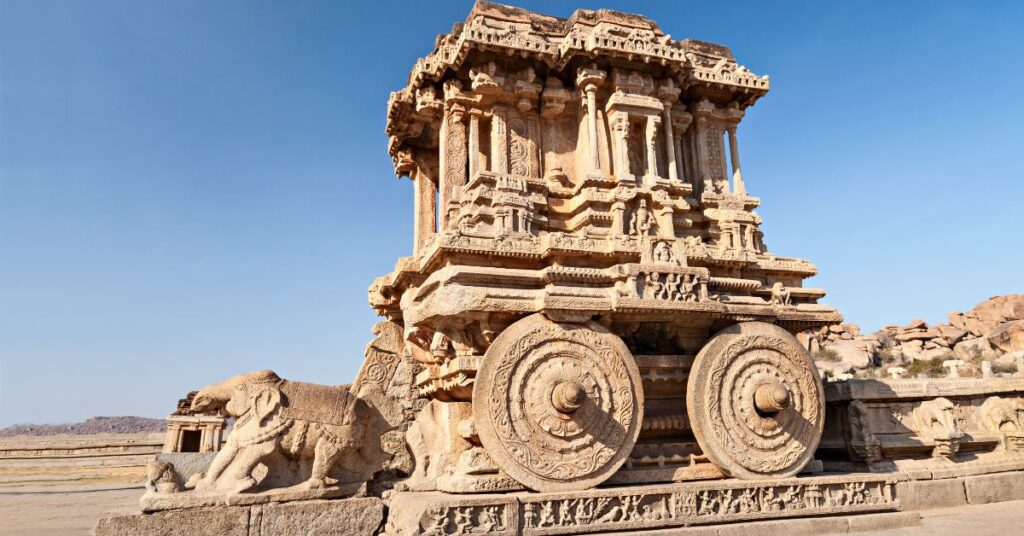
The Vittala Temple happens to be one of the most extravagant architectural marvels in Hampi. This temple is known for its enormous carvings, sprawling courtyards and the iconic stone chariot dedicated to Lord Vithoba (a form of Vishnu). The temple has musical pillars that make different sounds when struck softly which are truly unique among other structures throughout India. It remains a mystery how such a construction was made.
Another key attraction at the Vittala Temple is the stone chariot, a symbol of Hampi. This gigantic structure entirely made out of granite illustrates the Vijayanagara Empire’s skill in architecture. It is fashioned with remarkable details including sculptures of deities as well as mythological creatures on it.
- Best Time to Visit: Early morning to experience the temple in the soft golden light of dawn.
- Tip: Hire a local guide to learn about the fascinating history and significance of the temple’s architectural features.
3. Matanga Hill: A Panoramic View of Hampi
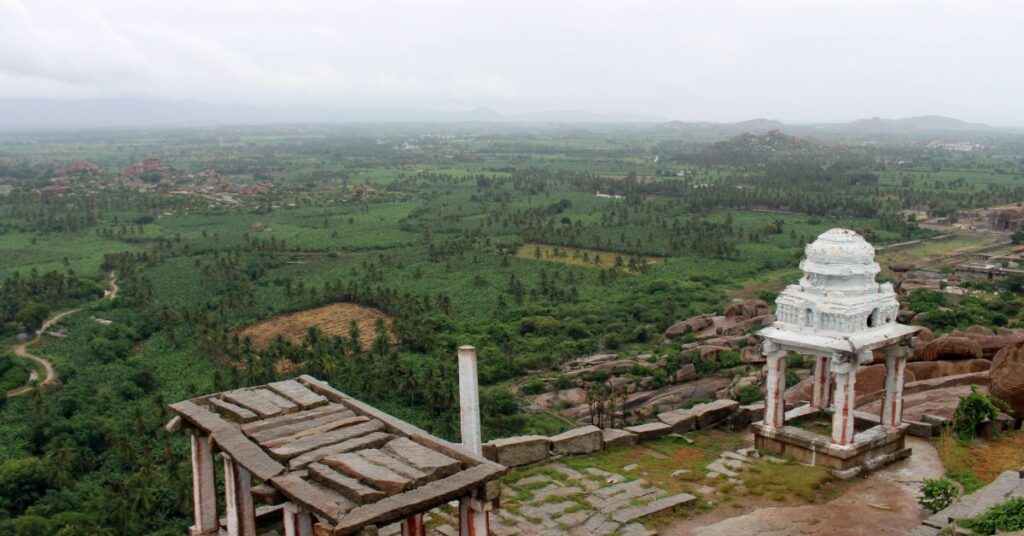
Matanga Hill is one of the highest points in Hampi. It offers panoramic views of neighbouring ruins, rivers and hills. For those of you who enjoy great hiking trails accompanied by breath-taking sceneries then Matanga Hill is a place to trek. It is known for its historical significance which dates back to the time of Rama as it was said to be the abode of Saint Matanga.
The hike up to the top of Matanga Hill does not take much effort, usually taking between 30-45 minutes. From here, one can see beautiful sunrise and sunset scenes across Hampi. And that’s why photographers like viewing it from an elevated angle while bird watchers find peace with nature there.
- Best Time to Visit: Early morning or late afternoon for the best light and cooler temperatures.
- Tip: Carry plenty of water and wear comfortable shoes for the hike.
4. Hampi Bazaar: A Glimpse into the Past
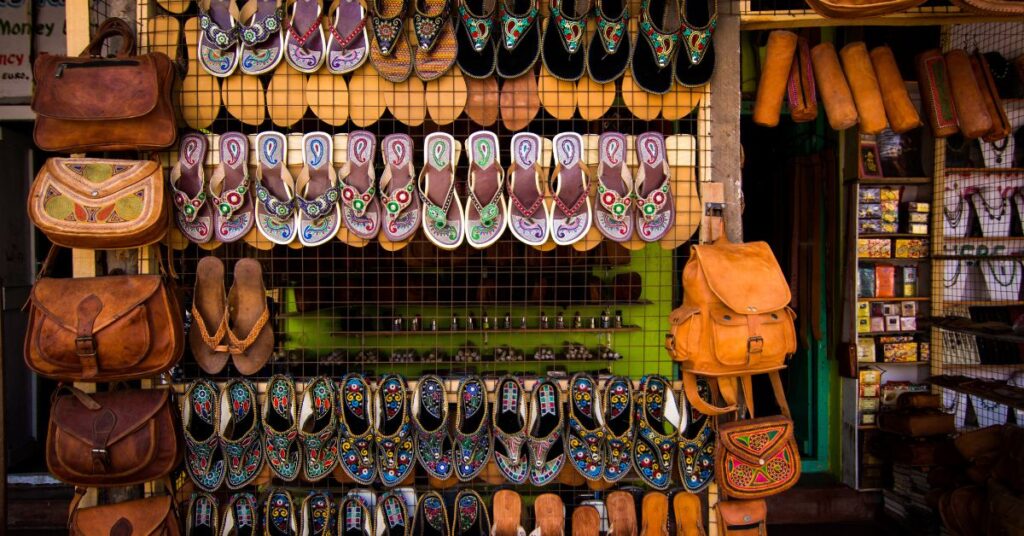
Situated on a street stretching for about one kilometre near Virupaksha Temple, Hampi Bazaar comprises ancient pavilions on either side. The bazaar was once a bustling marketplace during Vijayanagara times where trade occurred centrally. Today, it provides an insight into life in past centuries.
Even though some parts have crumbled away over time, remains of stone pavilions that were previously occupied by shops selling spices, textiles and precious stones are still visible within this bazaar area. In addition, the bazaar also leads you straight to the entrance of Mount Matanga thus serving as an ideal starting point for expeditions within this city.
- Best Time to Visit: Morning, before the heat sets in.
- Tip: Spend some time exploring the nearby monolithic Nandi statue, located at the eastern end of the bazaar.
5. Elephant Stables: Royalty’s Abode
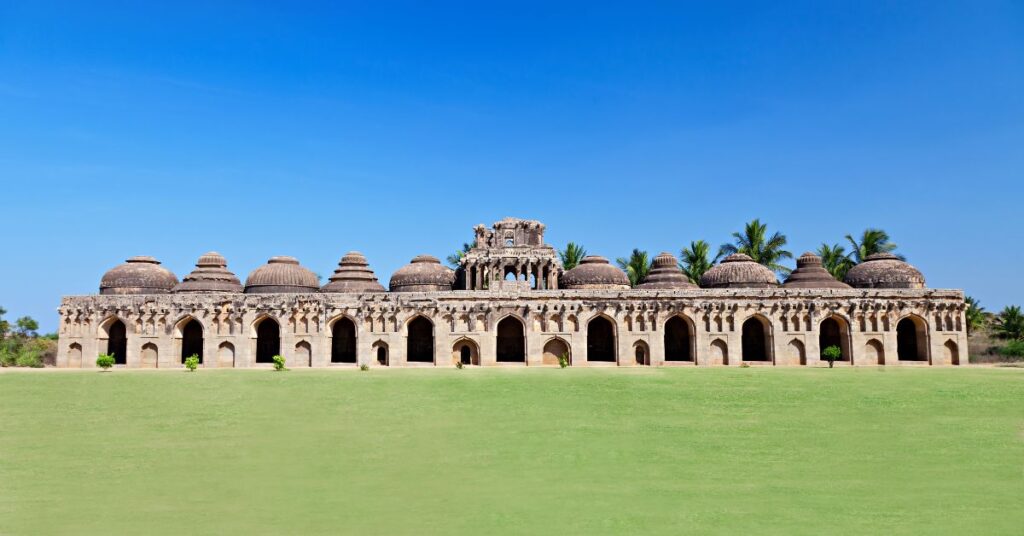
The Elephant Stables are impressive examples of Indo-Islamic architecture found in Hampi. These structures were designed to house the Vijayanagara Empire’s royal elephants. The stables are a series of eleven domed chambers, each large enough to accommodate an elephant. In particular, the central chamber features a larger dome and more elaborate decorations.
The stables are still intact and give us an idea of how the then-Vijayanagara rulers lived their lives. A visit to Zenana Enclosure which housed the queens is also essential where one can find the Lotus Mahal and watch towers.
- Best Time to Visit: Late afternoon when the light is softer, enhancing the architectural details.
- Tip: Visit the nearby Lotus Mahal, which is a fine example of Indo-Islamic architecture with its arched gateways and intricate carvings.
6. Hazara Rama Temple: A Royal Relic
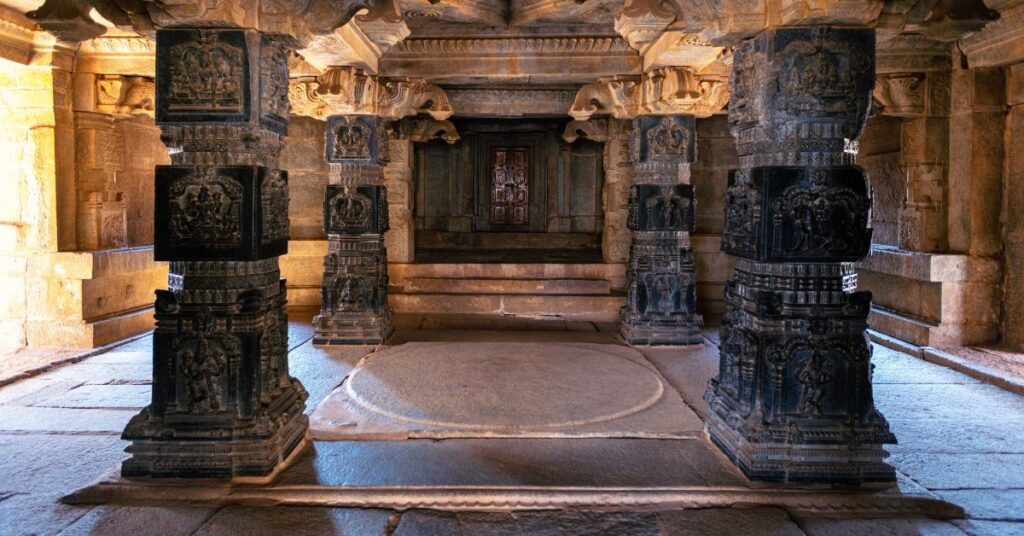
Hazara Rama Temple is a small but elegantly built temple located in the heart of Hampi’s royal quarters. The sanctuary was used exclusively by royalty during private worship services. What makes this sanctuary unique are its many detailed bas-reliefs depicting episodes from Ramayana on its walls.
The name “Hazara Rama” means “a thousand Ramas,” referring to multiple representations of Lord Rama on the walls of this shrine. The exterior walls of the temple are again decorated with panels showing elephants, horses, soldiers and dancing girls that portray grand processions belonging to the erstwhile Vijayanagara period.
- Best Time to Visit: Morning or late afternoon when the light is ideal for photography.
- Tip: Take your time to explore the intricate carvings, which tell the story of the Ramayana in a visually compelling way.
7. Narasimha Temple: The Fierce Deity
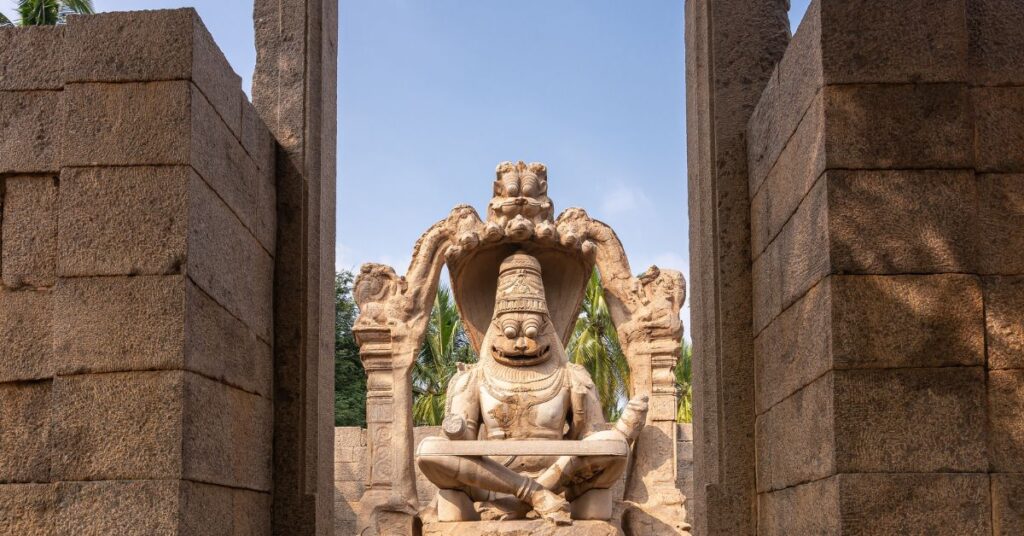
Hampi has the largest monolithic statue of Lord Vishnu Narasimha. The statue shows him with a feline face and human body, signifying his ferocity in this incarnation. Originally it had a smaller figure of Goddess Lakshmi on his lap, but that was destroyed by invaders, leaving only Narasimha.
The damage notwithstanding, it still remains an epitome of the Vijayanagara Empire’s artistic excellence and religious piety. Unlike other temples in Hampi, the temple is simple but there is nothing so magnificent as the statue of Narasimha.
- Best Time to Visit: Early morning to avoid the heat and crowds.
- Tip: Visit the nearby Badavilinga Temple, which houses a large monolithic Shiva Linga and is another important site in Hampi.
8. Zenana Enclosure: The Women’s Quarters
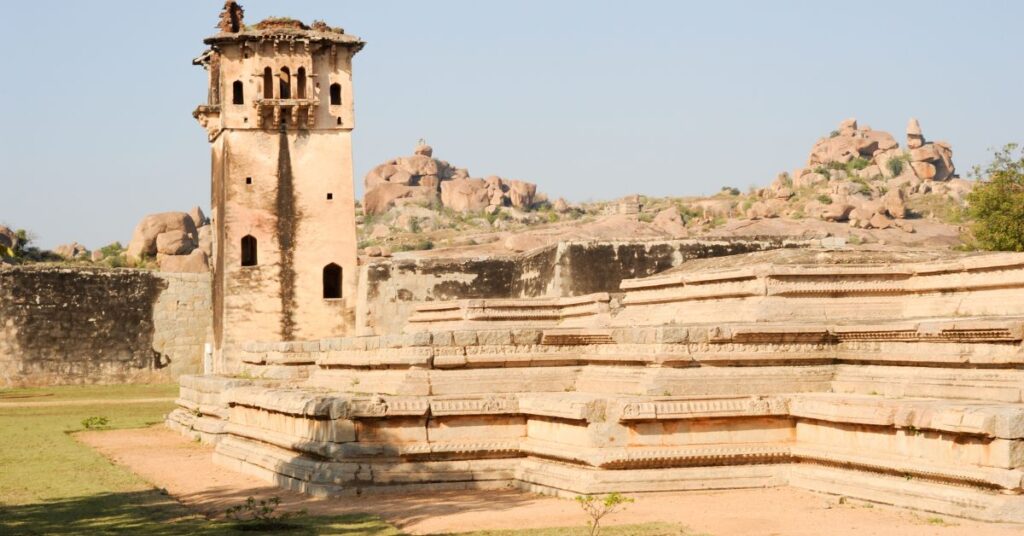
During the Vijayanagara Empire days, Zenana Enclosure used to be reserved for women serving under their kings. It is a vast area enclosed by high walls containing the Lotus Mahal and Queen’s Palace among other places.
Zenana Enclosure’s main attraction is Lotus Mahal. This two-storey pavilion combines Islamic and Hindu architectural styles characterized by arched windows, elaborate carvings and filigree domes on top. It still stands tall today with its delicate construction being one reason why many tourists visit this place frequently for photo shoots.
Once upon a time, Queen’s Palace was once the largest palace at Hampi although it now lies in ruins where many could hardly recognize it from its foundations indicating its original size as well as grandeur.
- Best Time to Visit: Late afternoon for the best lighting and fewer crowds.
- Tip: Explore the nearby Elephant Stables and the Watch Towers for a complete experience of the royal complex.
9. Sasivekalu Ganesha: The Monolithic Marvel
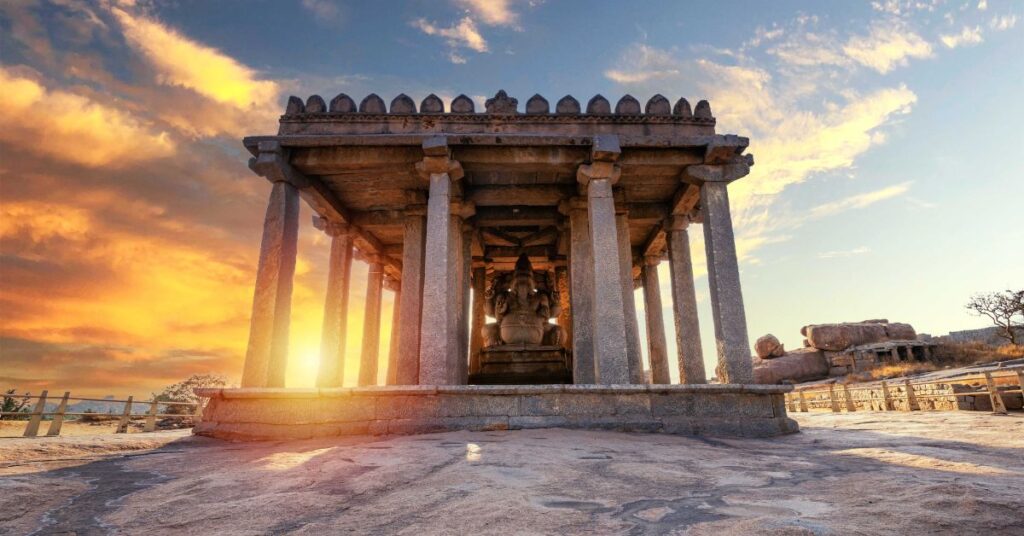
Sasivekalu Ganesh is a massive monolith statue made from a single rock depicting Lord Ganesha. It is located on the south-eastern slope of Hemakuta hill and it derives its name “Sasivekalu,” meaning “mustard seed” in Kannada, from this deity’s stomach shape.
The size of the statue is about eight feet tall and can be found within an open pavilion. A trader from Chandragiri, who did business with Vijayanagara kings, may have engaged craftsmen to construct it. This place should never be missed because one could see serenity on Ganesha’s face as well as intricate designs on his statues.
- Best Time to Visit: Morning or late afternoon when the light enhances the details of the statue.
- Tip: Combine your visit with a trip to the nearby Kadalekalu Ganesh, another impressive monolithic statue of Lord Ganesha.
10. Hemakuta Hill: A Sunrise to Remember
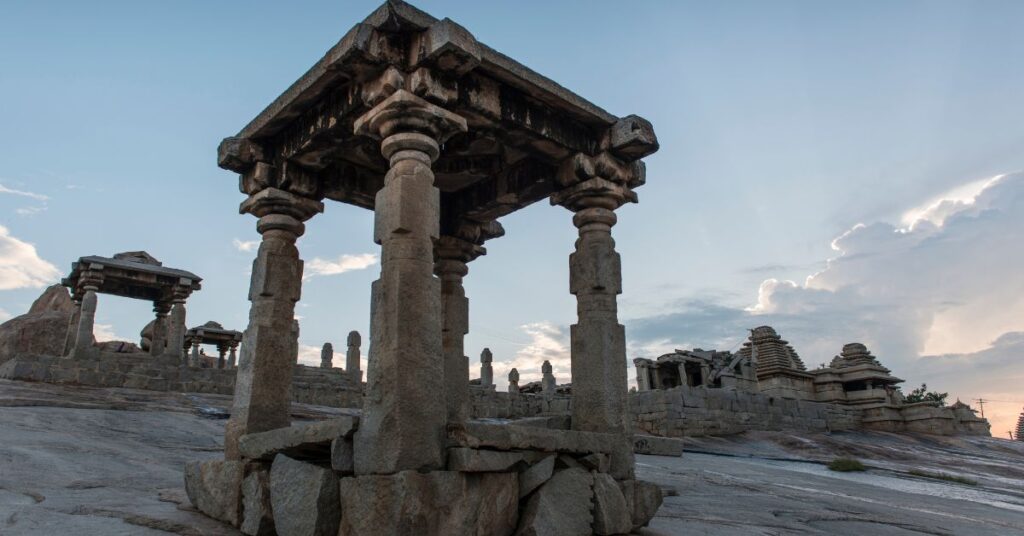
Hemakuta Hill is another important spot in Hampi for sightseeing with its easy climb up and a commanding view over areas around. The presence of several ancient temples, pavilions, and remains makes it interesting for inspection purposes. One famous feature associated with Hemakuta Hill is sunrise and sunset where the sky turns golden pinkish orange during such hours making this panorama appear magical!
The temples on Hemakuta Hill are relatively less grand than the others in Hampi, yet this lack of grandeur only adds to their appeal. These are some of the oldest structures in Hampi and date back to the pre-Vijayanagara period. From this hill, one can see the Virupaksha temple and boulders all around.
- Best Time to Visit: Early morning or late afternoon for the best light and cooler temperatures.
- Tip: Start your day with a sunrise hike up Hemakuta Hill and enjoy the peaceful atmosphere before the crowds arrive.
11. Queen’s Bath: A Royal Retreat
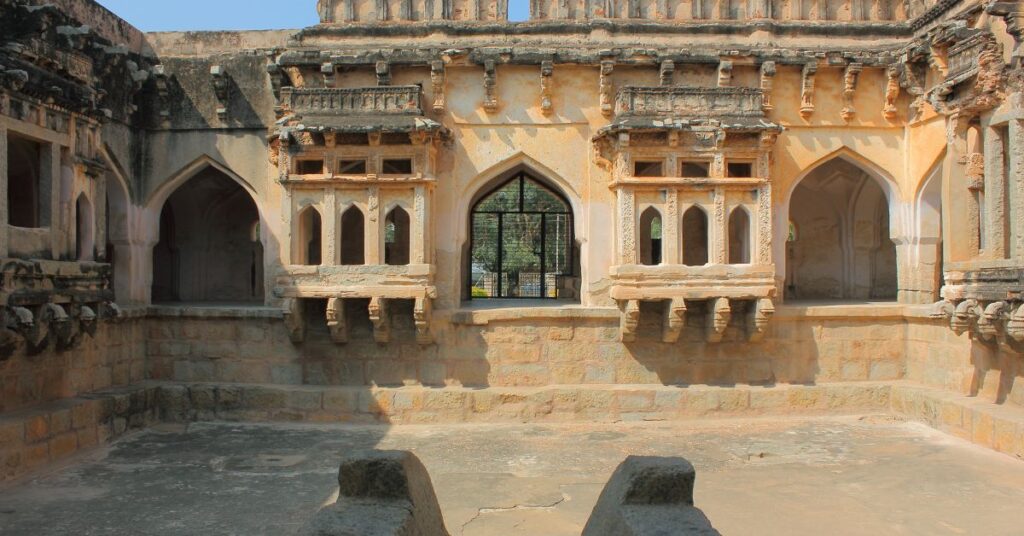
The Queen’s Bath in Hampi is a unique structure that showcases the luxurious lifestyle of the Vijayanagara royalty. The building was an extreme example of simplicity from the outside; however, it was lavishly done inside. The bathing pool is surrounded by arched corridors, balconies, and very fine workmanship.
Water flowed into it through a canal while its floors were delicately chiselled with flowers as well as geometrical shapes that covered walls. Despite being a dry pool for years now, this historical site still stands out as an architectural wonder of ancient India.
- Best Time to Visit: Morning or late afternoon to avoid the heat.
- Tip: Take time to explore the surrounding area, including the Royal Enclosure and the nearby temples.
12. Daroji Bear Sanctuary: A Wildlife Adventure
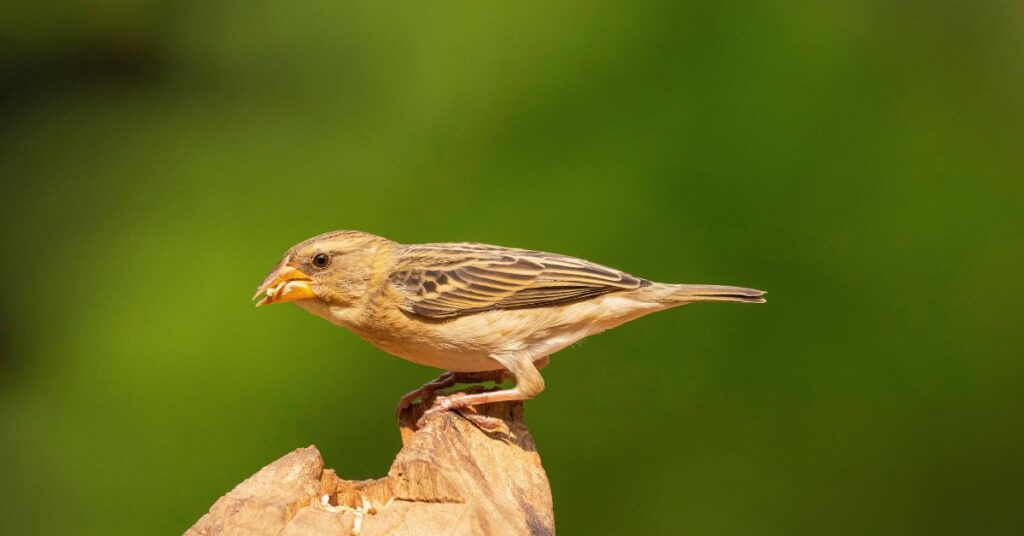
If you want to take a break from history, then you should try visiting Daroji Bear Sanctuary because it will be an opportunity to experience nature at its best in addition to wildlife viewing opportunities. Located about 15 km away from Hampi, there are many sloth bears besides leopards, hyenas as well as different kinds of birds found here among other animals that live within these surroundings.
Here tourists engage in safari drives taken within sanctuary areas so that they may have a clear view of creatures at a closer range. For visitors interested in seeing bears principally, the best time for them to be here would be in the early hours of the morning or late afternoons when these animals are usually very active. Besides offering stunning views of the countryside, the sanctuary is a perfect place for nature lovers.
- Best Time to Visit: Early morning or late afternoon for the best chances of spotting wildlife.
- Tip: Bring binoculars and a camera with a good zoom lens for the best wildlife viewing experience.
13. Achyutaraya Temple: A Hidden Gem
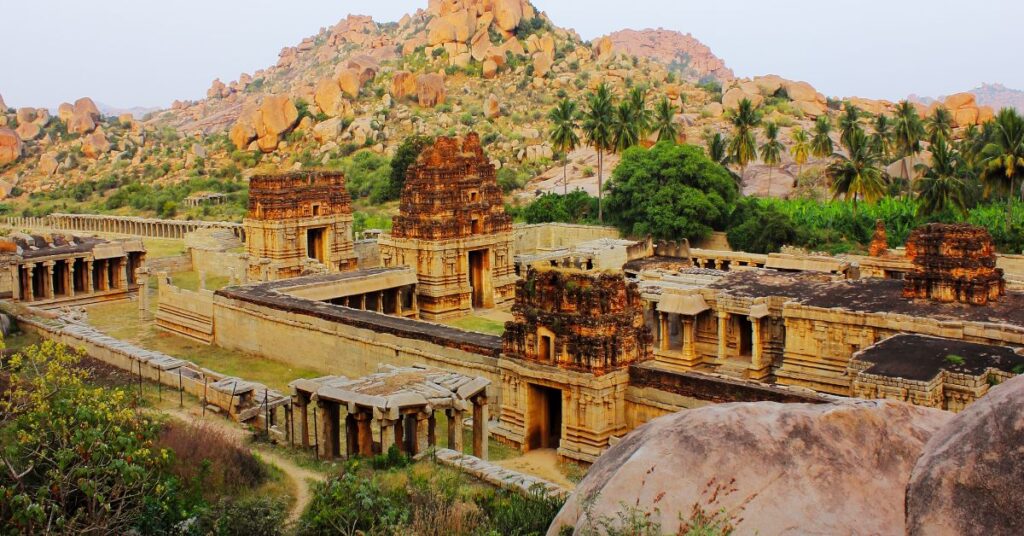
Achyutaraya temple located in a narrow valley is one of those little-known but most beautiful temples in Hampi. Built by King Achyuta Deva Raya who was younger brother to Krishnadevaraya, this temple devoted to Lord Tiruvengalanatha, an incarnation of Vishnu was built during the 16th century AD.
It consists of an enormous entrance gate, a vast courtyard and an elegant hall with pillars supporting its ceiling. On all sides, it is surrounded by relics of a once prosperous market area that adds more grandeur to it. The Achyutaraya temple being less crowded makes it ideal for those seeking tranquillity and introspection amidst such serenity.
- Best Time to Visit: Morning or late afternoon when the light is ideal for photography.
- Tip: Combine your visit with a walk along the nearby Tungabhadra River, where you can see more ruins and enjoy the scenic beauty of the area.
14. Riverside Ruins: A Spiritual Journey
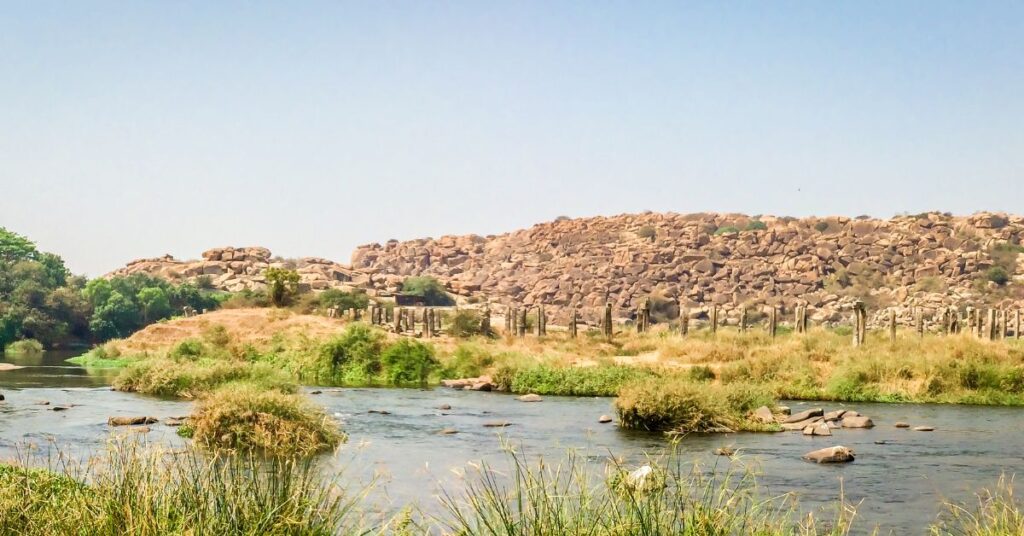
The Riverside Ruins of Hampi, known as Kudure Gombe Mantapa is a stretch along the Tungabhadra River that is full of ancient ruins, temples and carvings. This place has so much history and such a spiritual atmosphere that it becomes an ideal site for a casual walk.
One fascinating feature of the Riverside Ruins is the numerous shiva lingas carved into rocks along the riverbank. These lingas called “Riverside Linga” were said to be used in ancient rituals by the Vijayanagara kings. Small shrines, mantapas (pavilions), and other structures that have been around for centuries can still be seen today too.
- Best Time to Visit: Early morning or late afternoon to avoid the midday heat.
- Tip: Take a coracle ride on the Tungabhadra River to get a different perspective of the ruins and the surrounding landscape.
Final Words
Hampi is more than just a collection of ancient ruins; it is a living museum that offers a glimpse into the grandeur of a once-mighty empire. The rich cultural heritage, stunning architecture, and natural beauty make Hampi one such destination any traveller must tick off their bucket list. By either exploring through Virupaksha temple’s intricate attachments, climbing Matanga Hill for panoramic views or simply strolling past bustling bazaars and silent riverside ruins, there’s no other like relax in Hampi.
So pack your bags as we take you back in time visiting some of Hempi’s best places on earth. Every location has its own story while together they form an intricate tapestry portraying our history, culture and spirituality thus enchanting and inspiring any visitor.
- Travel Tip: Spend several days wandering around Hampi at your leisurely pace to enjoy every view. To better understand the history and significance of different destinations, engage a local guide.
- Bonus Tip: There is also photography in Hampi which should not be forgotten at all because this place has marvelous landscapes, intricate sculptures, and energetic people.
Happy travels!

